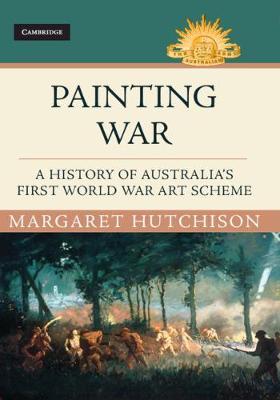During the First World War the Australian Government established an official war art scheme in 1917, sending artists to the front lines to create a visual record of the Australian experience of the war.
Around two thousand sketches and paintings were commissioned and acquired between 1916 and 1922.

Hardback 284pp RRP $59.95
In Painting War, Margaret Hutchison examines the official art scheme as a key commemorative practice of the First World War and argues that the Government officials’ selection of artists and subjects for the war paintings and their emphasis on the eyewitness value of the images over their aesthetic merit profoundly shaped the character of the art collection. The book provides a very detailed account of the individuals, institutions and the politics behind the war art scheme.
The book has 64 photographs, over half of which are colour photographs of drawings and paintings by the war artists. Many of these are not so well known, and so even someone not particularly interested in reading the detailed history of the war art scheme would find them very interesting. However, the publisher has decided to print them two-to-a-page which means that they are all roughly 11cm by 8cm which is most unfortunate as one of the most interesting feature of these art works is the detail in the paintings which often cover a large expanse of the battlefront. The book also has 37 pages of (very easy to find) footnotes together with a short bibliography and index. The work is one of a number in the Cambridge Australian Army History Series.
Margaret Hutchison is a Lecturer in History in the School of Arts at the Australian Catholic University, Brisbane. Her research focuses on the history of war, culture and memory. Painting War is her first book although she is also co-editor of a forthcoming collection of essays on painting, memory and war which will be published with the University of Alabama Press in 2019.
Reviewed for RUSIV by Robert Dixon, July 2019
Contact Royal United Services Institute about this article.






